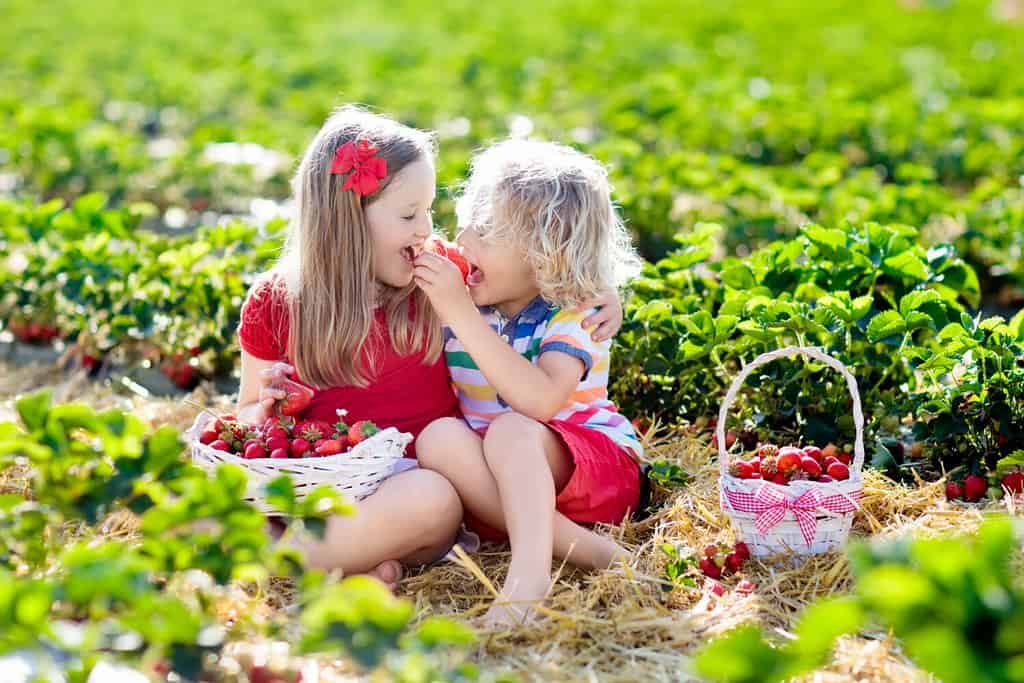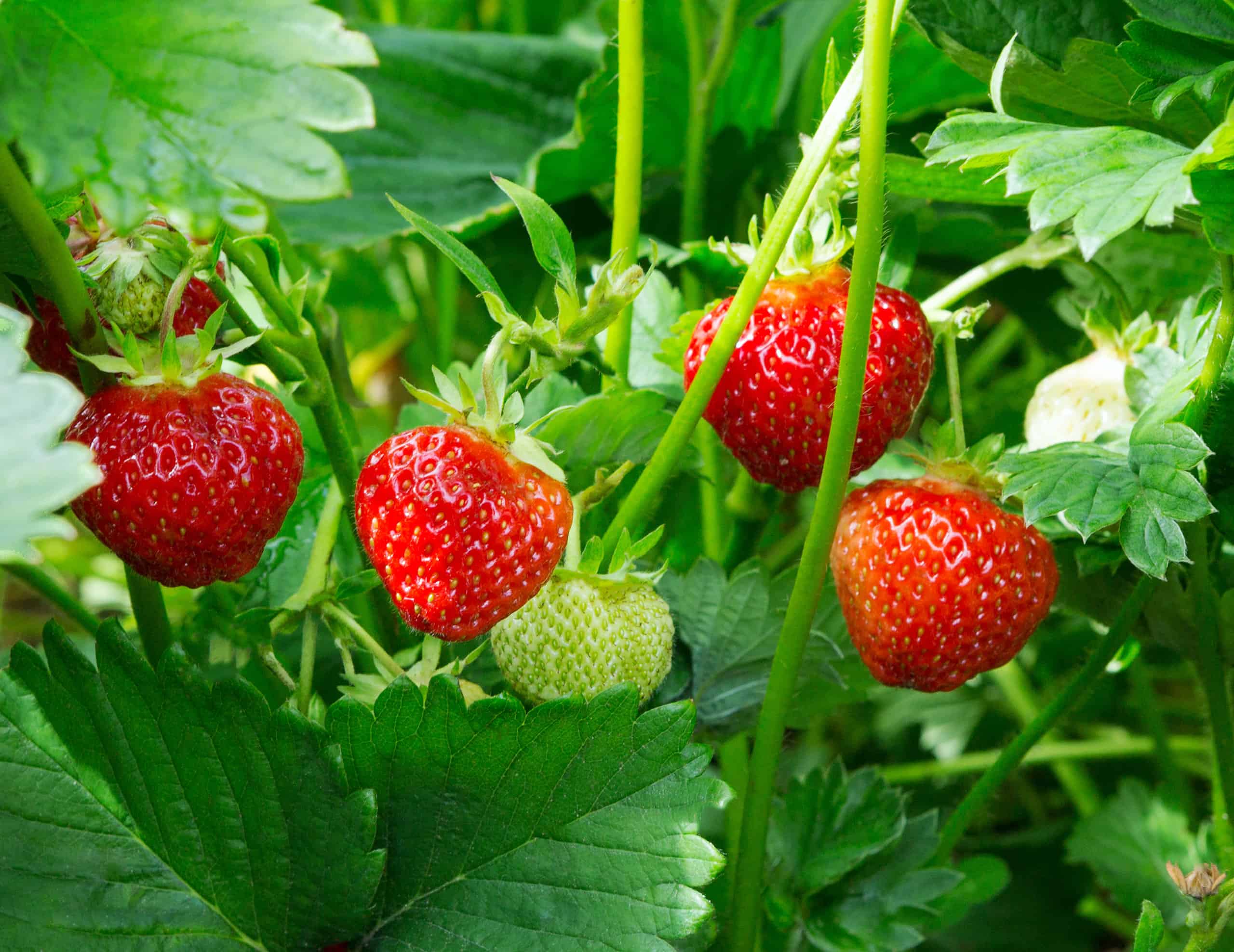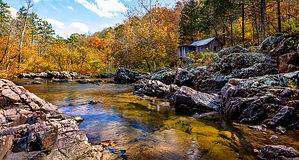The fertile soil and moderate climate of Missouri create an ideal environment for strawberries to flourish. With a few straightforward steps and a dash of dedication, you can enjoy the pleasure of harvesting your very own bountiful strawberry crop. In this guide, we’ll cover everything from selecting the finest strawberry varieties to understanding the right time to start planting strawberries for gardeners who live in the Show-Me State. Let’s start by looking at the climate of Missouri.
Does Missouri Have the Right Climate to Grow Strawberries?
Missouri is situated in the central United States, and it possesses a diverse climate influenced by both continental and humid subtropical elements. To determine if Missouri is conducive to growing strawberries, it is crucial to examine key climate factors such as temperature, precipitation, and frost occurrences.
Temperature
The temperature plays a vital role in the successful cultivation of strawberries. Missouri experiences warm summers and mild to cold winters. In the summer, average temperatures typically range from 75 degrees F to 90 degrees F which aligns well with the preferred temperature range for strawberry growth, ideally between 60 degrees F to 80 degrees F. These warm conditions promote healthy fruit development and ripening during the growing season.
Precipitation
An adequate water supply is essential for strawberry plants to thrive. Missouri receives an average annual precipitation of about 40 to 50 inches. The state has consistent rainfall throughout the year, with slightly drier conditions during late summer. This consistent water availability benefits strawberry crops, ensuring they receive the required moisture for proper growth and fruit production.
Winter Frost
Strawberry plants are sensitive to frost, which can damage or kill them. Missouri experiences frost during the winter months, with average dates of the first fall frost varying across the state, ranging from late September to late October. Likewise, the last spring frost dates vary between late March to early May. Therefore, strawberry growers must consider frost protection measures to safeguard their crops during vulnerable periods.
Challenges and Adaptations
While Missouri’s climate generally aligns with the requirements for strawberry cultivation, there are some challenges to address. High humidity during summer might increase the risk of disease and pest infestations. Adequate spacing and proper air circulation can mitigate these issues.

When it comes down to it, strawberries can indeed grow quite well in Missouri.
When to Start Growing Strawberries in Missouri
For successful strawberry cultivation in Missouri, selecting the right time to start seeding or planting is crucial. The ideal timing ensures that the plants have optimal growing conditions to produce a bountiful harvest.
Spring Planting: March to Early April
Spring is generally the best time to start seeding or planting strawberries in Missouri. The average last frost date across the state falls between late March and early April. By this time, the risk of frost damage to tender strawberry plants is significantly reduced, providing a suitable environment for their establishment and growth.
Choosing Strawberry Varieties
Before planting, consider selecting strawberry varieties well-suited to Missouri’s climate and soil conditions. Some recommended varieties for the state include Ozark Beauty, Allstar, and Cardinal. These varieties have proven to perform well in Missouri’s climate, offering excellent taste and yield.
Preparing the Soil
Before seeding or planting, ensure the soil is adequately prepared. Strawberry plants thrive in well-draining, loamy soil with a slightly acidic pH level between 5.5 to 6.5. Conduct a soil acidity test to discover the soil’s pH and make any necessary adjustments before planting.
Container Gardening and Protected Cultivation
If you plan to start planting earlier in the season or want to protect your plants from late frosts, consider container gardening or protected cultivation methods. Planting strawberries in containers or using row covers can offer additional frost protection, extending the growing season and potentially yielding an earlier harvest.
Fall Planting: August to Early September
Another viable option for starting strawberries in Missouri is fall planting. By planting in late summer or early fall, the strawberry plants can establish their root systems before winter sets in. This allows them to be well-prepared for vigorous growth when spring arrives. However, it is essential to choose early-maturing varieties and ensure the plants have enough time to root before the first frost.
When to Harvest Strawberries in Missouri
Timing is critical when it comes to harvesting strawberries in Missouri. Picking strawberries at the right moment ensures they are at their peak flavor and sweetness.
The primary indicator of strawberry ripeness is color. Ripe strawberries should display a deep, vibrant red hue. Avoid harvesting berries that are still mostly green, as they will not have reached their full sweetness. Additionally, check for plumpness and a glossy appearance, which are signs of a ripe and juicy strawberry.
The best time of day to harvest strawberries is in the early morning when temperatures are cooler. This helps preserve the fruit’s quality and flavor. As the day progresses, strawberries can become softer and more prone to damage during picking.
Strawberries typically ripen over an extended period, with peak harvesting times varying slightly depending on the region within Missouri. Regularly check the plants during the growing season and harvest ripe strawberries every two to three days. This ensures that no ripe berries are left on the plant for too long, reducing the risk of overripening or attracting pests.
It’s also worth noting that weather conditions play a vital role in strawberry harvesting. Ideally, pick strawberries when the plants are dry to prevent potential mold or rot issues. If rain is forecasted, try to harvest strawberries just before the rain to avoid waterlogged fruits.
Where to Pick Strawberries in Missouri
Missouri offers a delightful experience for strawberry enthusiasts looking to pick their own fresh, juicy berries. With its diverse agricultural landscape, several farms and orchards across the state welcome visitors to partake in the joy of strawberry picking.

Depending on the time of year, there are plenty of U-pick opportunities in Missouri for strawberry lovers.
©FamVeld/Shutterstock.com
Local Farms and Orchards
Numerous local farms and orchards throughout Missouri open their fields to the public for strawberry picking during the peak season. These family-owned establishments offer a charming and authentic experience, allowing visitors to harvest strawberries directly from the plants.
Farmers’ Markets
In addition to pick-your-own farms, many farmers’ markets across Missouri provide a selection of freshly harvested strawberries from local growers. While you may not have the experience of picking the strawberries yourself, farmers’ markets offer a convenient way to purchase ripe, locally grown berries.
Missouri Department of Agriculture Resources
The Missouri Department of Agriculture is a valuable resource for finding pick-your-own strawberry farms in the state. Their website often provides a list of registered farms and orchards, along with information about their offerings and contact details.
Seasonal Availability
The best time to go strawberry picking in Missouri typically falls between late spring and early summer, typically from mid-May to early June. However, the exact timing may vary slightly depending on the specific location within the state and prevailing weather conditions. When all else fails, a quick search online should yield at least a few U-pick opportunities and when they are available
Tips and Advice for Growing Strawberries in Missouri
Growing strawberries in Missouri can be a rewarding and fruitful (ha!) endeavor, provided you understand the specific needs of these luscious fruits and how to cater to them in Missouri’s climate.
1. Choose the Right Varieties
Select strawberry varieties that are well-suited to Missouri’s climate and soil conditions. Some recommended varieties include Ozark Beauty, Allstar, and Cardinal. These cultivars are known to perform exceptionally well in the state, offering delicious taste and high yields.
2. Find the Perfect Location
Choose a planting location that receives full sunlight for at least six to eight hours a day. Adequate sunlight is crucial for optimal fruit production and sweet, juicy berries. Additionally, ensure the site has good drainage to prevent waterlogging, as strawberries prefer well-draining soil.
3. Prepare the Soil
Before planting, prepare the soil to create a favorable environment for strawberry growth. Conduct a soil test to determine its pH level. Strawberries prefer slightly acidic soil with a pH between 5.5 to 6.5. If necessary, amend the soil with organic matter, such as compost, to improve its structure and nutrient content.
4. Timing is Key
The best time to plant strawberries in Missouri is during the spring, from March to early April, after the last frost date. Planting at the right time allows the strawberry plants to establish well before the warmer months, promoting robust growth and a bountiful harvest.
5. Planting and Spacing
When planting strawberries, space them about 12 to 18 inches apart in rows with approximately three to four feet between rows. Providing enough space between plants ensures good air circulation and reduces the risk of disease.
6. Adequate Watering
Strawberries need consistent watering to thrive, and that is especially so during the growing season. Ensure they receive one to one and a half inches of water each week, either from rain or irrigation. Avoid overhead watering, as it can increase the risk of disease. Instead, water the soil at the base of the strawberries.
7. Mulch for Moisture Retention
Applying a layer of organic mulch around the strawberry plants helps retain soil moisture and suppresses weed growth. Straw or pine straw mulch works well for strawberries. Mulching also protects the fruit from direct contact with the soil, reducing the risk of rot.
8. Fertilize Strategically
Strawberries benefit from regular fertilization to support healthy growth and fruit production. Use a balanced fertilizer or a specialized strawberry fertilizer. Apply it in early spring and again after the first harvest. Follow the manufacturer’s instructions for proper application.
9. Protecting from Frost
Missouri’s climate can bring late frosts in spring or early fall, which can damage strawberry plants. Consider using row covers or frost blankets to protect the plants during vulnerable periods. Be prepared to cover the plants overnight when frost is forecasted.
10. Pests and Disease Management
Be vigilant about monitoring for common pests like aphids, slugs, and snails, which can damage strawberry plants and fruits. Implement integrated pest management techniques to control pests effectively while minimizing the use of chemicals. Likewise, practice good sanitation and remove any diseased plants promptly to prevent the spread of diseases.
11. Regular Maintenance
Regularly inspect your strawberry plants for signs of health or distress. Remove any yellowing or damaged leaves and runners that may be taking away energy from fruit production. Proper maintenance ensures that the plants focus on producing high-quality berries.
Strawberries aren’t that tough to grow in Missouri, as long as you have a little know-how and a love for gardening!
Thank you for reading! Have some feedback for us? Contact the AZ Animals editorial team.








